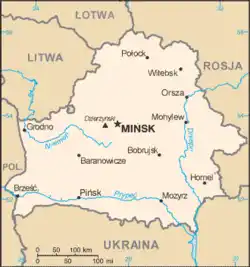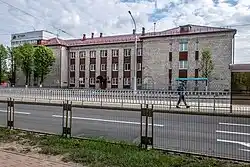
Belarusian genealogy offers a fascinating exploration into the rich and complex history of a region that has seen a multitude of cultural, political, and social changes. Belarus, located at the crossroads of Eastern Europe, has been influenced by various empires, including the Polish-Lithuanian Commonwealth, the Russian Empire, and the Soviet Union. This diverse history is reflected in the genealogical records and heritage of the Belarusian people.
Research your ancestors on MyHeritage
Historical ContextHistorical Context
Understanding Belarusian genealogy requires an appreciation of the country's historical context. The territory of modern-day Belarus was once part of the Grand Duchy of Lithuania, and later the Polish-Lithuanian Commonwealth, before becoming part of the Russian Empire in the late 18th century. Each of these periods left a distinct mark on the region's cultural and ethnic makeup.
The 20th century brought further complexity, with Belarus being incorporated into the Soviet Union after the Russian Revolution. The impacts of World War II, Stalinist purges, and post-war Soviet policies also significantly affected the population and the preservation of genealogical records.
Key Sources for Belarusian GenealogyKey Sources for Belarusian Genealogy
Church RecordsChurch Records
For much of Belarusian history, religious institutions were the primary record-keepers. Orthodox, Catholic, and Jewish communities all maintained birth, marriage, and death records. Church records are invaluable for tracing family lines, especially before the 20th century.
Civil RecordsCivil Records
Following the incorporation into the Russian Empire and later the Soviet Union, civil registration became more common. Civil records include vital statistics such as births, marriages, deaths, and residence information.
Census DataCensus Data
Various censuses conducted by the Russian Empire, the Soviet Union, and the independent Belarusian state provide snapshots of family structures, occupations, and living conditions.
Military RecordsMilitary Records
Given the region’s turbulent history, military records can also be a rich source of genealogical information. These include conscription lists, service records, and documents related to wartime displacement.
Land and Tax RecordsLand and Tax Records
Land ownership and taxation documents from the Polish-Lithuanian period and the Russian Empire can reveal much about the socioeconomic status of ancestors and their geographical origins.
Challenges in Belarusian GenealogyChallenges in Belarusian Genealogy
Researching Belarusian genealogy can be challenging due to several factors:
- Records may be in various languages, including Old Church Slavonic, Polish, Russian, Yiddish, and Belarusian. Understanding these languages or working with someone who can is often essential.
- Wars, political upheavals, and natural disasters have led to the destruction of many records. For example, the destruction during World War II and Stalinist purges resulted in the loss of significant amounts of historical documentation.
- The shifting borders of Belarus mean that records pertaining to Belarusian ancestors might be found in archives located in neighboring countries such as Poland, Lithuania, Ukraine, or Russia.
Preparation for Archival ResearchPreparation for Archival Research

Before reaching out to the National Historical Archive of Belarus, you should gather as much detailed information as possible about your ancestors, including surnames, first names, patronymics, and the years and places of birth of individuals born before 1917. It’s common not to have this information readily available. Therefore, the first step in your research should be to interview the oldest living relatives, visit ancestral locations, and check cemeteries where your ancestors are buried to verify the birth years of long-deceased family members. If these efforts do not yield connections to the pre-revolutionary period, you may need to consult other archival institutions.
The main collection of documents pertaining to the territory of modern Belarus after 1917 is housed in the National Archive of the Republic of Belarus, regional state archives, regional civil registry archives, and zonal state archives. In Belarus, there are two state institutions that house genealogical documents from the 19th and 20th centuries and conduct genealogical research: the National Historical Archive of Belarus and the National Historical Archive of Belarus in Grodno. Even if your ancestors lived in what is now Belarus for centuries, you should be prepared for the possibility that the records you seek may be located in different archives in various countries.
The National Historical Archive of Belarus preserves documents from the Minsk, Vitebsk, and Mogilev provinces for the period before 1917 (as well as selected metric books for the Vileyka and Disna districts of the Vilna province from the late 19th to early 20th centuries). The National Historical Archive of Belarus in Grodno preserves documents from the Grodno province for the period before 1917 (including the Brest, Kobrin, and Pruzhany districts). The administrative boundaries of the Russian Empire’s provinces and the modern regions of the Republic of Belarus differ significantly.
The main collection of documents for the Vilna province (including the territories of modern Braslaw, Vileyka, Volozhin, Voronovo, Hlybokaye, Ivye, Lida, Miory, Maladzyechna, Myadzel, Pastavy, Astravets, Ashmyany, Smarhon, and Sharkawshchyna districts) is stored in the State Historical Archive of Lithuania (Lietuvos valstybės istorijos archyvas).
A significant collection of genealogical documents related to Belarusian lands (such as 18th-century metric books for territories that became part of the Vileyka, Lida, Minsk, Ashmyany, Pinsk, Pruzhany, Rechitsa, Slonim, and Slutsk districts of the Vilna, Grodno, and Minsk provinces by the end of the 18th century) is held in the Russian State Historical Archive. This archive also contains the Heraldry Department of the Senate’s collection, which includes documents on the history of all noble families of the Russian Empire.[1]
See alsoSee also
Explore more about Belarusian genealogyExplore more about Belarusian genealogy
- Vital records in Belarus on MyHeritage
- How to Research Your Ethnicity with Genealogy on the MyHeritage Genealogy Hub
- Ethnicity map of Belarus on MyHeritage
- State archives in Belarus -- full information on Belarusian state archives for genealogical research
References
- ↑ "Генеалогия". niab.by. Retrieved 2024-08-20.

